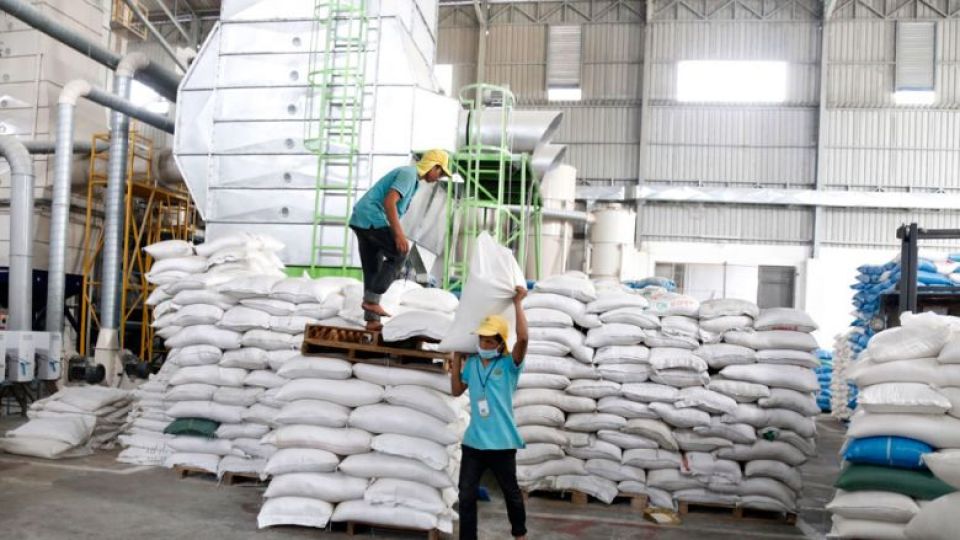December 2, 2022
PHNOM PENH – A marked uptick in Indica rice exports to European markets is expected after Cambodia won a challenge against the European Commission’s (EC) 2019 decision to remove tariff preferences on imports of the rice from the Kingdom for three years, on grounds that the shipments were causing perceived economic damage to EU producers.
The safeguard measures, imposed in January 2019 on milled and semi-milled Indica rice, required Cambodian exporters to pay an import duty of €175 ($183) per tonne in the first year, €150 per tonne in 2020, and €125 per tonne in 2021.
The EC – the EU’s executive arm – initiated the safeguard investigation following protests from Italy and Spain, which are top exporters of milled rice to Europe, the Cambodia Rice Federation (CRF) said in a November 30 statement.
The statement mentioned Case T‑246/19, in which the General Court (ECG) of the Court of Justice of the EU (CJEU) on November 9 ruled that the import duties were illegal and that the investigation had not gathered sufficient evidence, and annulled the EC’s January 16, 2019 implementing regulation 2019/67 that imposed the safeguard measures.
The court also ordered the EC to bear its own costs and pay the costs incurred by Cambodia and its apex rice industry lobby, the CRF, as well as for Italy and its national rice agency Ente Nazionale Risi to bear their own costs.
The CRF filed the case – led by Sok Puthyvuth, former president of the federation – to the CJEU on April 10, 2019, and was represented by international lawyers.
“The victory in this case is a reflection of the properness of the development of the Cambodian rice sector, under the clear development policy of the Royal Government of Cambodia, led by [Prime Minister Hun Sen],” the CRF said.
Andy Lay Chhun Hour, group president and CEO of City Rice Import Export Co Ltd, a prominent rice milling enterprise based in Battambang province, told The Post on December 1 that although the safeguard measures had placed downward pressure on Cambodian milled-rice exports to the EU, especially for white rice varieties, the situation has seen marked improvements.
“Cambodia’s milled-rice exports have improved since January 18, 2022, when [imports] into the European market were [once again] exempted from duties, and that’s especially true for jasmine rice, which has seen continuous gains in momentum,” he said.
Hong Vanak, director of International Economics at the Royal Academy of Cambodia, maintained that although the November 9 court ruling comes after the safeguard measures were lifted, the decision will improve the reputation of Cambodian milled rice on the world stage, win over more international buyers, and offer other benefits.
“This is another positive sign for the Cambodian rice sector, in addition to the fame that Cambodia just gained in November at the World Rice Conference in Phuket, Thailand,” he said, referring to the event that crowned Cambodia’s Phka Rumduol jasmine variety as the World’s Best Rice for the fifth year.
Phka Rumduol is a type of long-grain jasmine rice that has emerged as a top choice of international buyers, and is one of the varieties exported under the “Angkor Malys” certification mark. The Cambodian Agricultural Research and Development Institute says it released the variety for farmer use as recently as in 1999, after 10 years of development and testing.
Vanak underscored that these achievements will benefit farmers, mills, exporters and other rice sector stakeholders.
Milled-rice exports have been performing well this year, amounting to 509,249 tonnes in the first 10 months of 2022, up 10.67 per cent from the 460,169 tonnes registered in the same time last year, the Ministry of Agriculture, Forestry and Fisheries reported.
Fragrant rice contributed the bulk of the exports at 348,501 tonnes or 68.44 per cent, followed by white rice (148,933 tonnes; 29.24 per cent), and parboiled rice (11,815 tonnes; 2.32 per cent).
China was the largest buyer of Cambodian milled rice in the January-October period, accounting for 231,873 tonnes which were up 1.18 per cent year-on-year, followed by the EU (165,630 tonnes; up 43.43 per cent) and ASEAN (48,253 tonnes; up 10.19 per cent), while other countries and territories bought 63,493 tonnes, marking an 11.48 per cent drop, the ministry said, indicating that four of the 27 EU countries did not import any through official channels.


